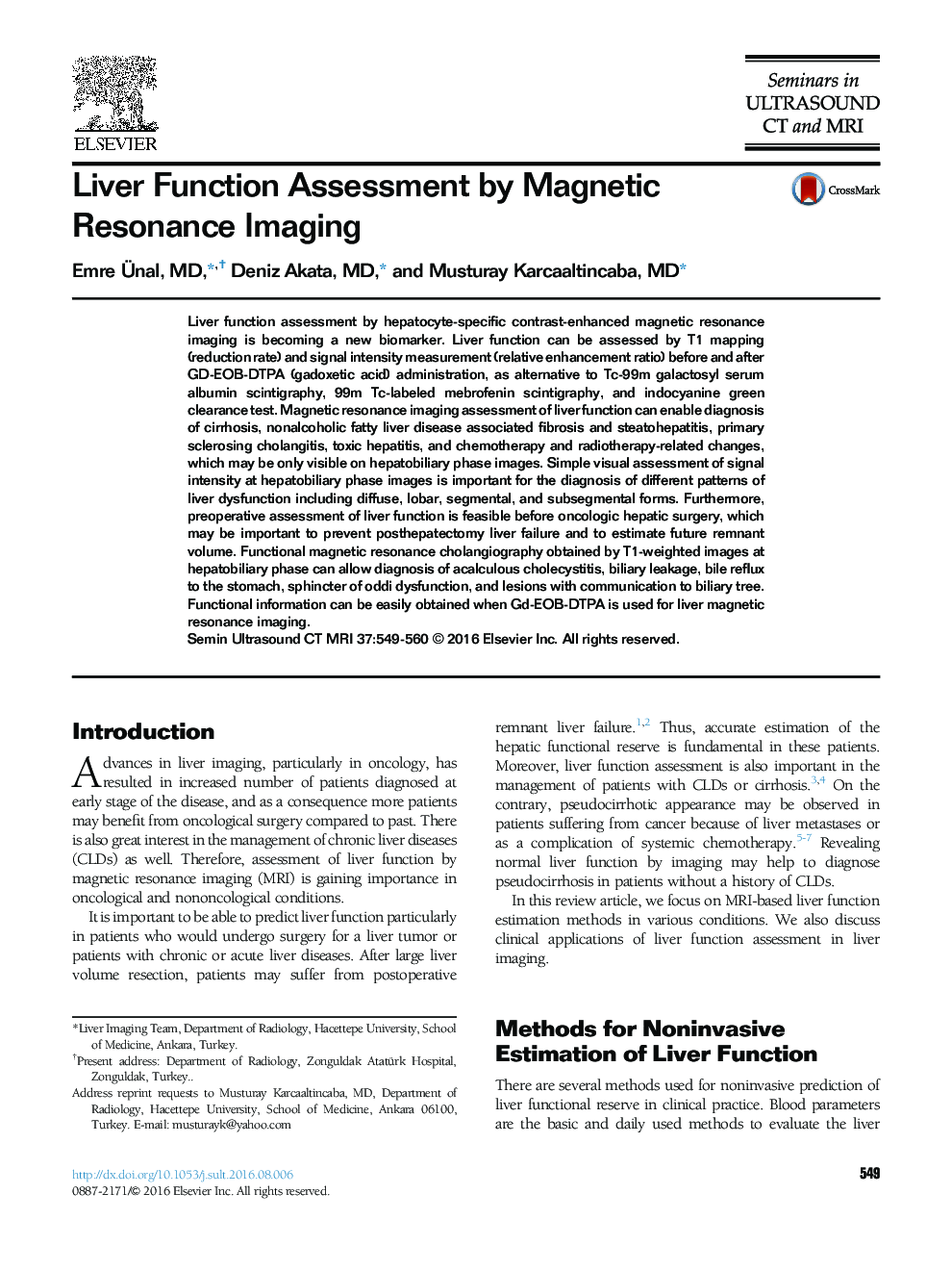| Article ID | Journal | Published Year | Pages | File Type |
|---|---|---|---|---|
| 5579602 | Seminars in Ultrasound, CT and MRI | 2016 | 12 Pages |
Abstract
Liver function assessment by hepatocyte-specific contrast-enhanced magnetic resonance imaging is becoming a new biomarker. Liver function can be assessed by T1 mapping (reduction rate) and signal intensity measurement (relative enhancement ratio) before and after GD-EOB-DTPA (gadoxetic acid) administration, as alternative to Tc-99m galactosyl serum albumin scintigraphy, 99m Tc-labeled mebrofenin scintigraphy, and indocyanine green clearance test. Magnetic resonance imaging assessment of liver function can enable diagnosis of cirrhosis, nonalcoholic fatty liver disease associated fibrosis and steatohepatitis, primary sclerosing cholangitis, toxic hepatitis, and chemotherapy and radiotherapy-related changes, which may be only visible on hepatobiliary phase images. Simple visual assessment of signal intensity at hepatobiliary phase images is important for the diagnosis of different patterns of liver dysfunction including diffuse, lobar, segmental, and subsegmental forms. Furthermore, preoperative assessment of liver function is feasible before oncologic hepatic surgery, which may be important to prevent posthepatectomy liver failure and to estimate future remnant volume. Functional magnetic resonance cholangiography obtained by T1-weighted images at hepatobiliary phase can allow diagnosis of acalculous cholecystitis, biliary leakage, bile reflux to the stomach, sphincter of oddi dysfunction, and lesions with communication to biliary tree. Functional information can be easily obtained when Gd-EOB-DTPA is used for liver magnetic resonance imaging.
Related Topics
Health Sciences
Medicine and Dentistry
Radiology and Imaging
Authors
Emre MD, Deniz MD, Musturay MD,
